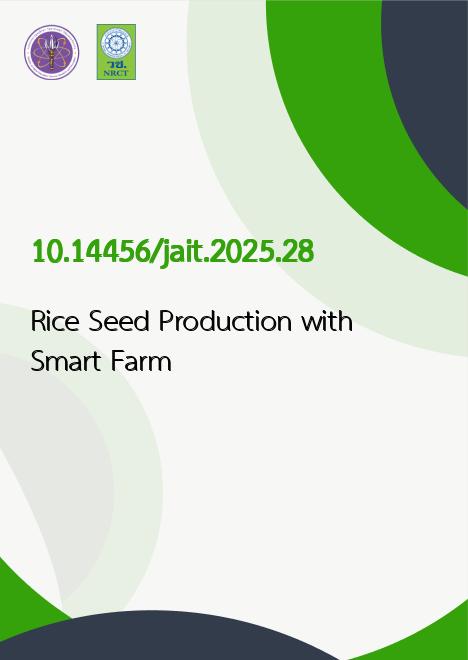
|
Rice Seed Production with Smart Farm |
|---|---|
| รหัสดีโอไอ | |
| Creator | chalawan Wantong |
| Title | Rice Seed Production with Smart Farm |
| Contributor | Wanida Sumranram, Utis Tahom, Varit Kitthanarut, Ekkaluk Salukkham |
| Publisher | Faculty of Informatics, Mahasarakham University |
| Publication Year | 2568 |
| Journal Title | Journal of Applied Informatics and Technology |
| Journal Vol. | 7 |
| Journal No. | 2 |
| Page no. | 465-487 |
| Keyword | Smart Farm, Internet of Things, Online Map |
| URL Website | https://ph01.tci-thaijo.org/index.php/jait |
| Website title | Journal of Applied Informatics and Technology |
| ISSN | 3088-1803 |
| Abstract | The rice production process plays a important role in determining the quality of rice seeds. However, the relatively high cost of certified seeds remains a major constraint for farmers in many areas. Consequently, a group of farmers in Ban Nong Suang formed a cooperative to produce and distribute rice seeds locally. Despite these efforts, challenges continue to exist,, particularly in managing water levels in paddy fields, which directly impact productivity. This study aims to develop a smart farming system for rice seed production by integrating Internet of Things (IoT) technology with Geographic Information Systems (GIS) to enable real-time monitoring, tracking, and control of water levels in rice fields. A mobile application with an integrated online map is used to visualize field data in real time. Farmer satisfaction with the system was assessed using a close-ended questionnaire and a Likert scale, while cost-effectiveness was analyzed by comparing implementation costs against the profits generated from rice production. The results demonstrate that the system efficiently monitors and regulates water levels. Farmers expressed a very high level of satisfaction (mean score of 4.88), particularly in relation to time savings on field management tasks. This improvement enabled farmers to allocate more time to alternative income-generating activities. Regarding cost, the average expense for smart farming equipment was 1,433 baht, with an installation cost of 1,500 baht per rai. Farmers with access to existing infrastructure, such as artesian wells, submersible pumps, and solar panels, were able to recover the investment with a profit of 3,033.33 baht per rai from cultivating just one rai of land. In contrast, farmers with only partial or no infrastructure would require a minimum of 14 rai and 23 rai, respectively, to achieve a break-even point. |